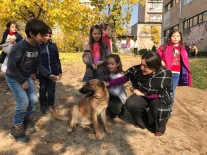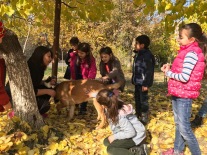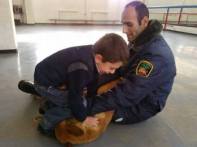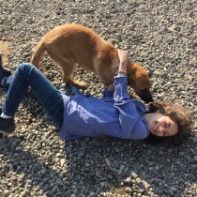- Ensuring the fundamental right of education, realization
- Ensuring the necessary environment and conditions
- Ensuring accessible instruction
- Educational environment which admits and takes into account the diversity of the learners. A flexible, inclusive, unrestricted and safe environment for each learner’s complete inclusion and participation in the teaching learning process.
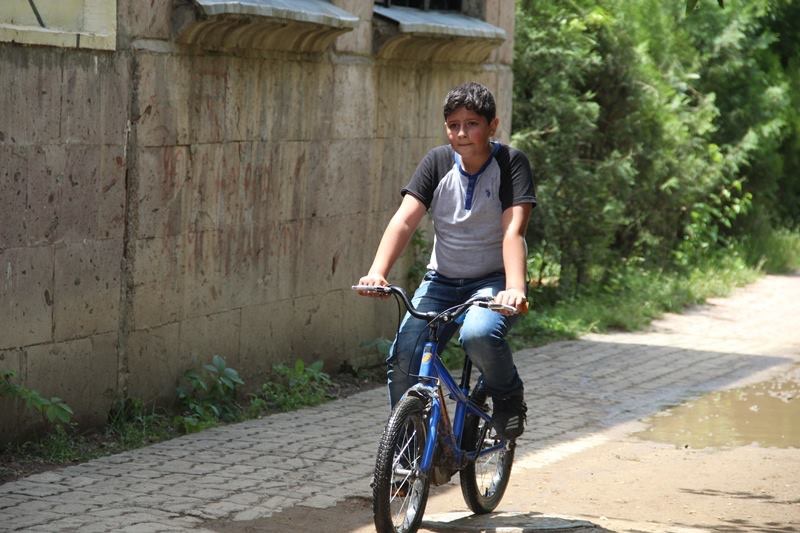

- Continuous work for revealing and overcoming social barriers
- All the interested sides take part in this process: teachers, learners, parent community representatives, family members.
Deletion of borders
- Inside and outside, borders between the building and the garden
- among the learners
- among the teachers
Inclusion indicators
- project based instruction
- a camp of the prolonged day for children of different age groups
- chosen kind of sports
- further education in the Educomplex and out of it
- participation in the educational tours in Yerevan and in the country
- runs an educational blog
- who runs the blog or who helps the learner to run the blog?
The inclusive system education, which may be considered to be the synonym to public education, is supposed to comprise in itself solidarity, care, and humanism. Inclusive education supposes the adaption of the system and not the adaption of the child. The influence of the environment is also of great importance.
Studies have shown that when a person touches an animal, an exchange of energy takes place: the animal drags the person’s negative energy and gives its positive energy in return.
This is the result we had when our learner took off his gloves impatiently and patted our dog Ati. Then Ati transformed its quiet energy to others. Animal-assisted therapy is a branch of psychotherapy which is quite an effective method. Canine-assisted therapy (when using dogs) was first practiced in the European countries in the 1950s. Other animals are also used: dolphins, horses. Besides improving the social, mental and cognitive functioning of the children. Animal-assisted therapy also helps the children with mobility problems.
After practicing some elements of canine-assisted therapy I began realizing the project “Mixing with Animals”. There were children who had some fears during the first meeting with Ati and there were brave enough to immediately make friends with Ati.
Canine-therapy helps to overcome stressful situations. It may cheer the children up and calm down their nervous system. It can also evoke the feelings of friendliness and empathy. While mixing with animals children are not conscious of the fact that they are participating in a rehabilitation process. Canine-assisted therapy is contraindicated for the children who are allergic to the dog’s fur.
While continuing to realize the project “Mixing with Animals” we began working with horses. We have six horses on our educational farm. Hippotherapy or treatment with horses is especially effective when working with children with mobility problems and children with the symptoms of autism.
Animal therapies are part of the rehabilitation process for treating infantile cerebral palsy, autism, child development delay, down syndrome, psychological traumas, behavioral disorders.
At our Educomplex we also use water therapy as an educational tool, which helps to overcome stressful situations and calm down the nervous system.
Water therapy is useful during the rehabilitation process.
This therapy has both a healing and preventive effect.
We should follow the following principles to have positive results:
- principle of individual approach to every child
- principle of collaboration
- principle of complex approach
- principle of relying on saved abilities
The prolonged day camp as an indicator for inclusive education
Children with special needs are not only successfully included in the teaching-learning process, but they also become campers of the prolonged day. The take part in different activities: rituals, educational tours.
The inclusion of the parents and family members in the process of inclusive education is great. Parents have a better understanding of their children’s mental and physical abilities. They acquire the necessary knowledge to organize their children’s day at home.
Translator: Yura Ganjalyan


